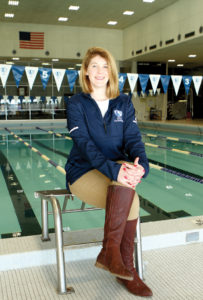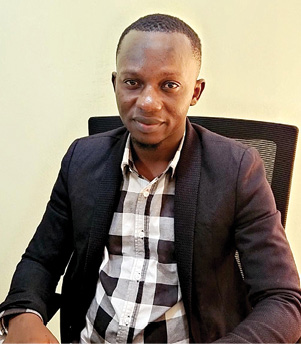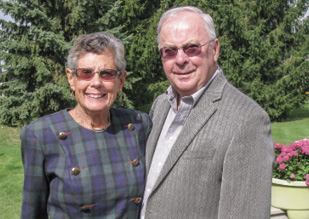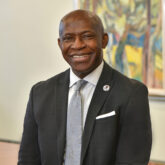
Jacqueline Michalski ’10
Jacqueline Michalski ’10 was a member of the women’s swimming and diving team at SUNY Oswego for four consecutive years. As a student-athlete, she became the assistant swim coach for the Lake Oswego Swim Club for two seasons. She graduated in 2010 with a Bachelor of Science in wellness management. Shortly after graduating, Michalski accepted a position as an assistant swim coach while pursuing her master’s degree in health care administration at King’s College. In 2014, she became the head coach of the Eastern Illinois University men’s and women’s swim team where she is in her fourth year.
How old were you when you started to swim competitively? What was your specialty/main event?
I joined the local USA competitive swim team, Chenango (N.Y.) Aquatics, (CAGO) in October 1992 when I was 4 years old. I was an active member of the club until 2006. The coaching philosophy of Chenango Aquatics was to encourage swimmers to swim all the strokes and events. That being said, I was a natural breaststroker and was much better suited for distance events than sprints. My favorite events were the 400 IM and 200 breaststroke, two events I regularly swam while at SUNY Oswego.
One of my favorite first memories of swimming was at the UNAC Sertoma meet held in Endicott, N.Y. I was a member of the 8 and under girls’ relay team for both the 200-free relay and 200-medley relay team. Being a natural breaststroker, 6-year-old me swam that leg of the winning relay with another 6 year old, 7 and 8 year old. The four of us still hold the record for that meet, 25 years later. It’s still a story I tell my college team when I ask them to remember why they started swimming, and who they swim for. I’m on deck every day for that little girl who fell in love with the water.
When you were looking at colleges, how important was it to you to be able to keep swimming?
I knew I wanted to swim in college and continue in the footsteps that so many of my older club teammates took. My club coach was very supportive and encouraged me to pursue this goal. She would remind me that the events in college would suit me better as a swimmer, allowing me to swim longer events.
At first, how did you feel about swimming at the college level?
I felt determined, but I was also nervous. My determination came from wanting to prove myself and continue the tradition of winning SUNYACs, but it didn’t come without any nerves. I had an amazing support system, including my family back home, club coaches, Coach Kami and my teammates.
I was excited to be swimming under a female head coach, but I knew she had high expectations for me. At 18 years old, I knew my path at SUNY Oswego would be a special one and create a solid foundation for the rest of my life. Now at 30 years old, I know my four years spent in Laker Hall made me into the successful coach that I am today.
What was the first moment that you felt part of the Oswego team?
I felt welcome on the team from the moment I went on my recruiting trip in early October 2005. The coach at the time knew how to make an impact — the whole team was there to welcome me; they knew my name, events I swam, and took time to show me around campus. Their warm welcome, along with the instant connection I felt with the university, helped me realize Oswego was the place for me. This welcoming sensation only grew over the summer leading up to fall 2006, my freshman year.
One of my favorite memories involves swimming the 400 IM early in the season my freshman year. Usually the men and women swam in their own heats, but to save time, the men and women of Oswego ended up swimming in the same heat. My strength in the IM was the back 200 of the event (breaststroke and freestyle). The race started in usual fashion for me, lagging behind after the first leg, coming in dead last after the 100 yards of fly. I began to catch up to the field in the backstroke and pull ahead of all the females in the heat. When it came to the breaststroke leg of the race, I was set on catching up to my male teammates. One of the men from Oswego was very strong in the first 200 yards; a chance to catch him was nearly impossible at that point of the race. The other male swimmer knew me from club swimming and was aware of what I was doing. He was prepared for me to make a move and swam the race so I could catch him, but not beat him at end of the race. The third male swimmer was not aware of this, allowing me to catch him in the breaststroke and pass by him during the freestyle leg, leading me to finish before him. He was a good sport about me beating him that day but he was not going to let that happen again. From that day on, he beat me in every IM race and every IM set in practice. We grew into great training partners and great friends. The men’s and women’s team acted very much as one, always motivating and encouraging for success, despite gender.
I took this team atmosphere, which I learned from Oswego, and carried it into my daily coaching life here at EIU. The men’s and women’s teams sometimes combine practices and work together as a unit to make each other better.
When did you decide to transition your love for the sport into coaching?
I was fortunate that I had the opportunity to help coach at the Chenango Aquatics while still in high school and as part of the team. During college, I helped coach the local club team in Oswego, and in the summer helped coach CAGO. I loved being on deck as well as being in the water.
I received a Bachelor’s of Science in wellness management with minors in health science and coaching. From the very beginning, I knew I wanted to have an education that would help me in my future coaching career, but it also gave me an outlet to pursue a degree outside of athletics.
After my four years, I was not sure if I would pursue coaching or go into the healthcare field. I was able to find a graduate assistant position as an assistant swim coach at King’s College and get my master’s in healthcare administration while coaching. The more time I spent on deck, the more I realized I wanted to coach and keep the sport of swimming in my life.
I started to do research on what it would take to make coaching my full-time job in the college setting. The more research I did, the more I noticed how few women were coaching at the college level across all divisions, but especially Division I. I had the same emotions I did when entering Oswego as I did when entering the world of DI athletes as a female. I was determined to be successful, but also nervous knowing not many women are in this field. I have always been motivated by “beating the boys” and knew that I wanted to be in this world at this level. I knew my time at Oswego had prepared me for entering the world of college athletics.
What was a key lesson learned at Oswego that you’ve applied to your coaching career?
During my freshman year at Oswego, I was fortunate enough to be a part of a team that won SUNYAC on the women’s side. I was swimming for a strong female coach -there was great senior leadership – and I was swimming some of my best times in my life, with the women on the team doing the same thing.
My sophomore year came with a new coach, new seniors, new freshmen and a new mindset — everything seemed new, when in reality, nothing was that new. I will admit, I did not adjust well to the changes, and did not know how to adjust to the feeling of change. I struggled with the mental adjustments and I needed to realize that the most important things didn’t change. I was on a team whose mindset was still set to excellence, the coach still had a passion for the team and university, the beautiful campus, and professors were still there to encourage and guide me to success.
I experienced coaching changes as a swimmer at Oswego, as an assistant coach at Saint Francis University and as a coach here at EIU. I had a very successful freshman year, and I believe I can credit that to strong preparation in the pre-season, along with a strong coach and positive team environment. My next three years at Oswego were a very different experience, but the struggles I had my last three years, in addition to the success of my freshman year, shaped me into the coach I am today. I would not change any of my experiences I had at Oswego. The highs and lows have both served me well. I tasted what it was like to be successful, as well as fail, as a swimmer. I believe the lows have helped me become a better coach and given me insight on how to navigate coaching changes, as well as handle the difficulties one can experience both as a swimmer and a coach.
Since leaving Oswego, I have become a Division I head coach of a men’s and women’s swim teams who puts academics first and pays close attention to the highs and lows of a swimmer’s career. These values that I have instilled in our core team culture have produced a women’s team that has had the highest GPAs in the nation among DI swim programs. Both genders have also ranked within the top 20 nearly every semester. I carry the passion both my former coaches had for their school and team into my daily coaching life. They truly believed in the school, team and community. They both taught me to bring a passion for the job every day and motivate the team as a whole, as well as to encourage all swimmers individually to be the best they can.
If you could go back to your first day as a freshman showing up to Laker Pool and give yourself advice, what would it be?
To take your four years of eligibility and make the most of them. Every day might not be the best day, but after four years, you can never do this again. Not many people get to say they were a student-athlete. Make the most of your time with your teammates and your coach.
More from Alumni Profiles
Astrophysicist, Yale Professor Credits Oswego with Setting His Course for Stellar Career
Astrophysicist, Yale Professor Credits Oswego with Setting His Course for Stellar Career Earl Bellinger ’12 is one stellar guy. A quick review …
BHI Alumnus from Liberia Gains World of Experience
BHI Alumnus from Liberia Gains World of Experience Otis Gbala M’23 became the first SUNY Oswego graduate who studied from Liberia …
Couple’s Loyal Support for Oswego Spans Five Decades
Couple’s Loyal Support for Oswego Spans Five Decades Marilynn “Lynn” Nagy Farrar ’61 and Neil Farrar cherish their memories of Oswego …











